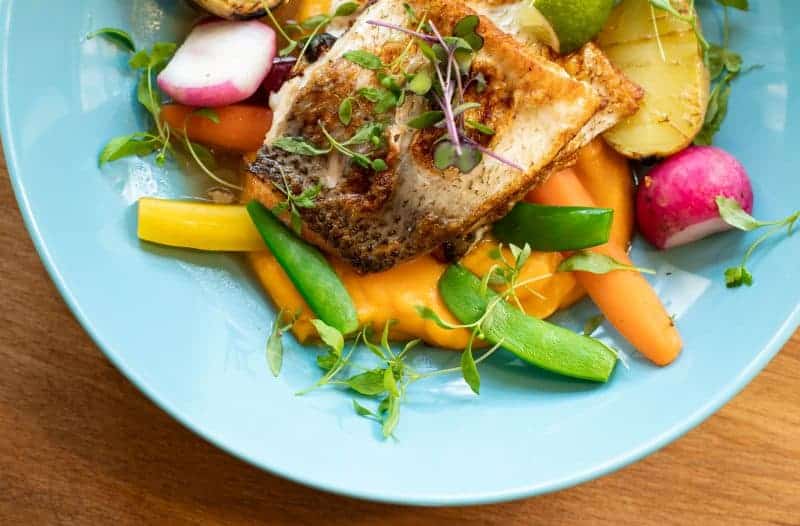Guide to Exclusive Vineyards to Visit in Croatia
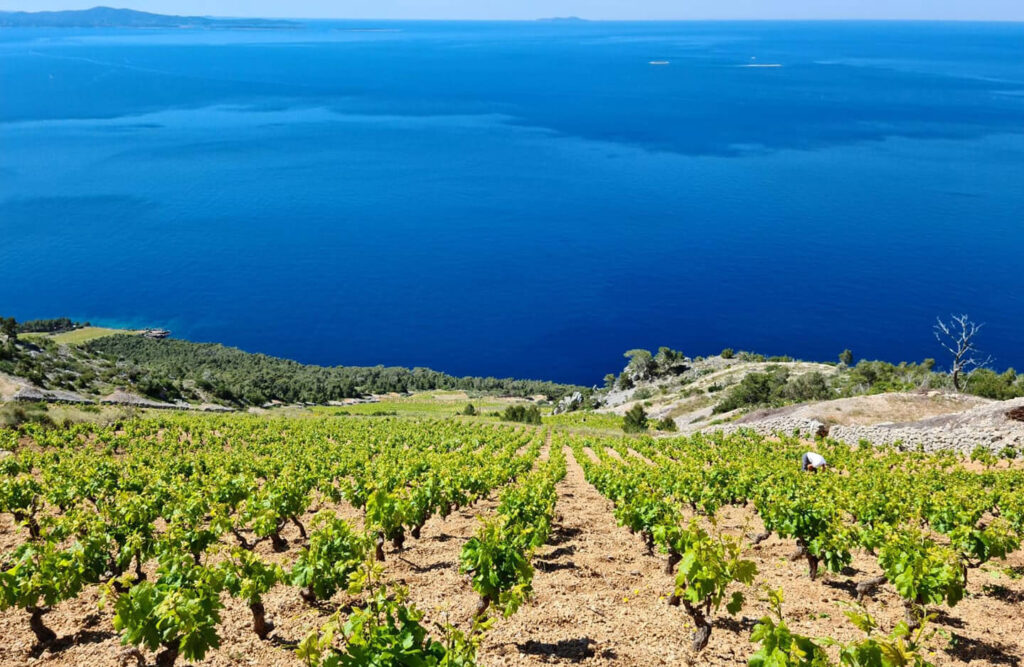
Croatia has undergone a remarkable transformation, shifting from a well-kept travel secret to a sought-after wine destination. The country’s wine culture, deeply embedded in its history, is now receiving the international recognition it truly deserves. For visitors seeking an authentic wine experience, delving into Croatia’s winemaking traditions is an enriching journey that connects the past with the present. The country is home to countless vineyards that offer breathtaking panoramic views, a fascinating history of viticulture, and unforgettable wine-tasting experiences. This article delves into the captivating story of Croatia’s winemaking resurgence, exploring its diverse wine regions and highlighting some of the most remarkable vineyards that have put the nation on the global wine map. From the coastal regions to the inland vineyards, wine lovers can explore various wineries that produce high-quality and internationally awarded-wines. Here’s a guide to some exclusive vineyards you might consider visiting in Croatia.
Dingač vineyards, Pelješac
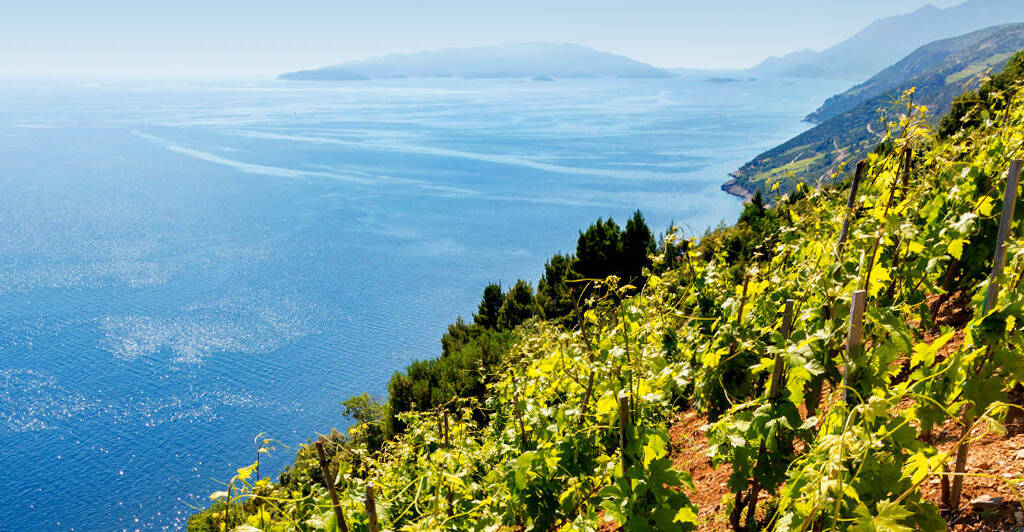
Dingač vineyards are located on the steep southern slopes breathtaking steep slopes of the Pelješac peninsula that cascade down hundreds of meters to meet the azure embrace of the Adriatic Sea.
Recognized as the most famous vineyard in Croatia, its name has been carefully safeguarded, embodying quality and tradition. This heritage-rich vineyard represents a timeless link between the past and the present, an homage to the artistry of winemaking that has been meticulously preserved for generations.
This unique topography, characterized by its terraced cultivation, not only contributes to the vineyard’s visual allure but also plays a pivotal role in nurturing grapes of exceptional quality.
Dingač Vineyard has a distinctive claim to fame: producing wines named exclusively after the vineyard itself. This extraordinary practice signifies the commitment to authenticity and its dedication to producing wines that reflect the essence of their terroir.
If you come across wines named Dingač, it’s important to know that they are made from the Plavac Mali grape variety, which is an indigenous grape from Dalmatia.
The Plavac Mali wine from Dingač is typically full-bodied, with rich flavors and aromas that reflect the region’s unique conditions.
The grapes, meticulously cultivated on the precipitous slopes, benefit from the Mediterranean climate and triple insolation, that graces the region with its ample sunshine and maritime influences.
So, the deep crevices filled with soil on the slopes of Dingač retain enough moisture even during the driest summers, and they drain well in wetter years. This consistently yields wines with high concentration and the potential for the utmost quality when it comes to the Plavac Mali variety.
The result is a collection of wines embody the flavors of the land, the sea, and the meticulous craftsmanship of the winemakers.
Wineries in the area, that produce Plavac Mali from Dingač appellation, are
- Saints Hills Winery,
- Vicelić Winery,
- Matuško Winery,
- Madirazza Winery,
- Sagul Winery,
- Kiridžija Winery,
- Skaramuča Winery,
- Edivo Winery,
- Dingač Winery.
Or simply order a Best of Dingač Wine Case and prepare your taste buds for ultimate enjoyment.
Lumbarda vineyards, Korčula
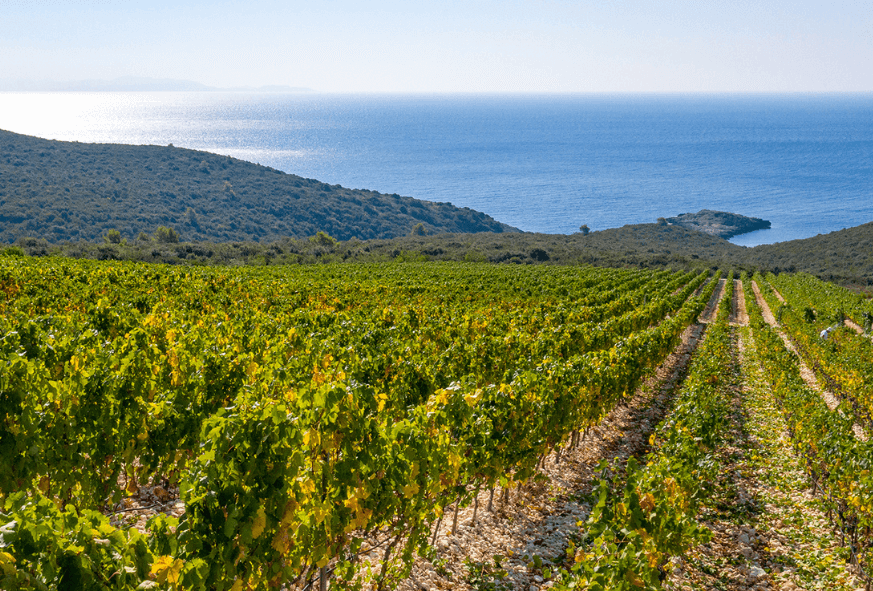
Lumbarda, situated on the eastern coast of Korčula Island, is a delightful village known for its stunning scenery, sandy beaches, and historic locations. It is also recognized for its significant contribution to the Croatian winemaking tradition.
The Lumbarda vineyards are particularly famous for producing high-quality white wines, notably ones from the Grk grape variety, one of the most renowned indigenous Croatian white varieties.
This particular variety of vine has not only survived the devastating scourge of phylloxera that ravaged vineyards across the Old Continent, thanks to the sandy soil of Lumbarda vineyards on which the pest couldn’t thrive.
In the world of viticulture, where the delicate balance between nature and cultivation is paramount, the Grk grape stands as a testament to resilience and adaptability.
This unique type of grape is one of the 1% of grape varieties in the world that cannot fertilize itself.
Known as “the most feminine of all grapes,” the reason for this nickname is not due to its taste, but rather because the plant only has functional female parts. This suggests that the grape requires planting alongside other grape varieties to successfully reproduce.
In Korčula, it is commonly planted next to the well-known Plavac Mali, the most popular red grape variety in Croatia. This is because both varieties blossom at the same time, resulting in ripe fruit in early September.
Some of the must-visit wineries in the Lumbarda wine-growing region are:
Brač vineyards, Brač
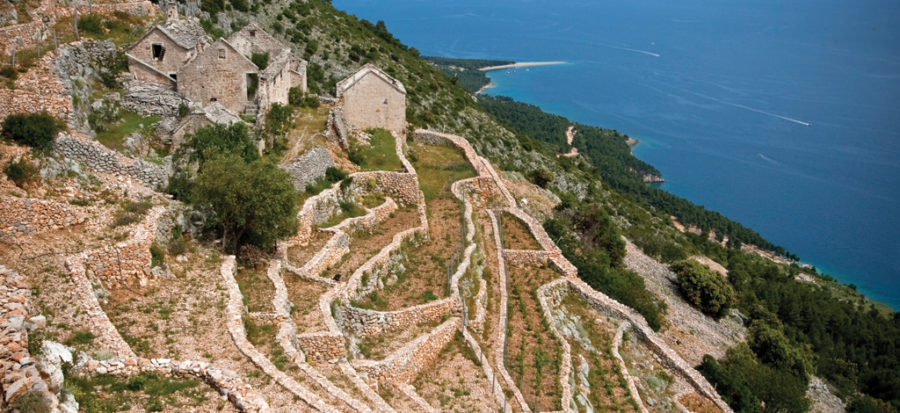
Brač Island is not only known for its stunning landscapes, one of the best beaches in Croatia, and historical sites but also for its thriving vineyards and winemaking tradition.
The island’s unique climate, soil, and indigenous grape varieties contribute to the production of high-quality wines that have gained recognition both locally and internationally.
There is a remarkable winery called Stina Winery in Bol, whose vineyards are considered some of the most stunning in Croatia, as they have made significant investments in restoring them to their former glory.
Some of the winery’s vineyards are situated in the splendid location of Murvica, which is the highest altitude in Croatia on the island of Brač.
The vineyards were rejuvenated in 2009, giving rise to the development of a winery and two successful brands – Stina Majstor and Stina Remek djelo.
Other astonishingly steep vineyards, named Stipančići and Stina Vineyard, are the epitome of extremity.
From its incline to its setting, everything is superlative. There is a staggering 70 percent gradient, requiring harvesters to secure crates to themselves to prevent slipping into the abyss.
For any visitor, the experience is breath-catching, and the heart sinks to the heels. For those for whom this is a daily workplace, nothing remains extraordinary.
The Stina Vineyard on the island of Brač, overlooking Bol, resembles a black ski slope. Hence, the epithet “extreme” is fitting.
This is the kingdom of Plavac Mali and likely among the most extreme and highest vineyards. This is an extreme cultivation method on extreme slopes, and it’s well-known that Plavac thrives in such conditions.
Hvar vineyards, Hvar
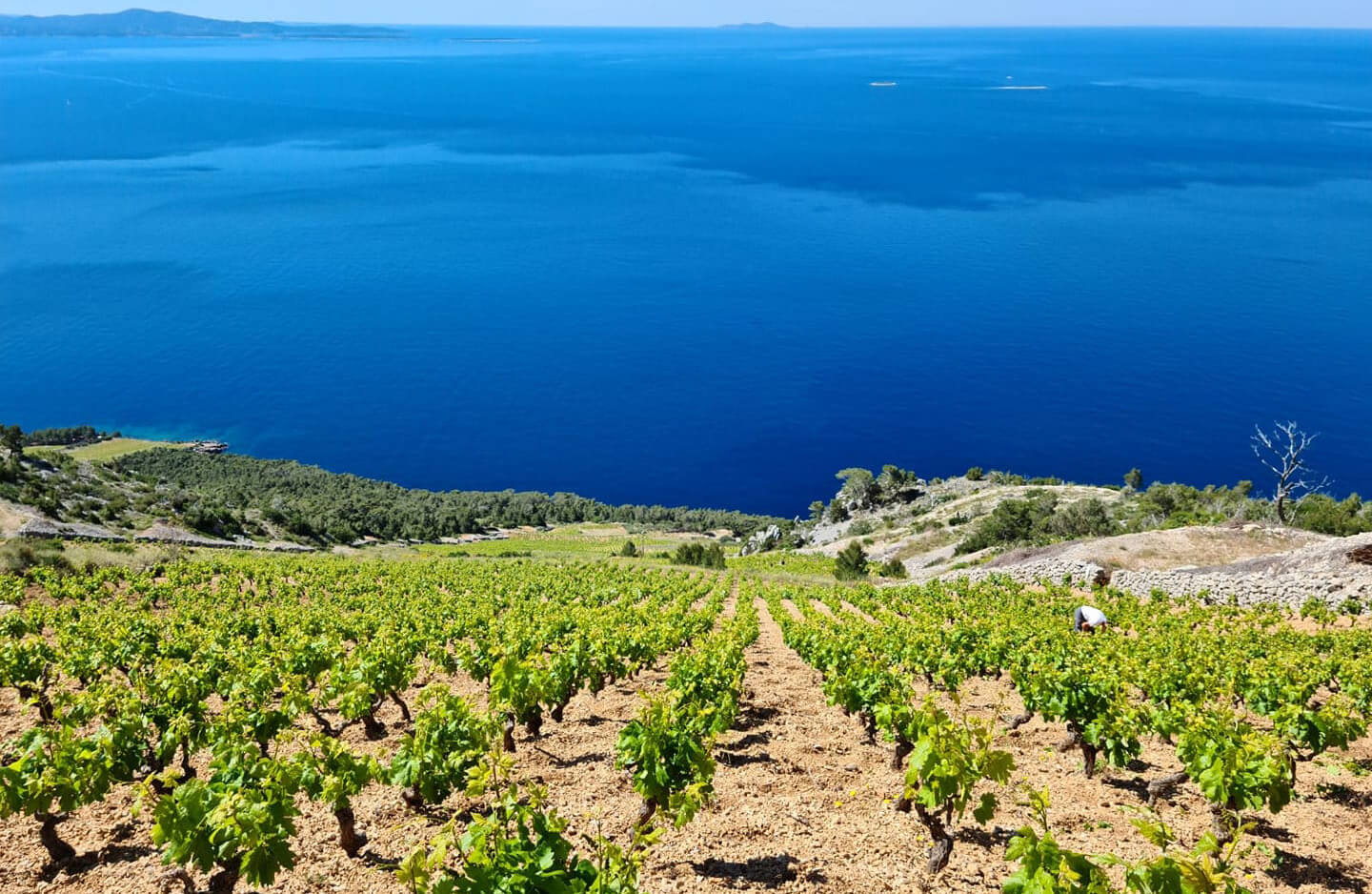
Hvar Island is known for some of the most unique and extreme vineyards.
Nestled on the unique southern slopes of the picturesque island of Hvar, the Hvar vineyards stand as a testament to nature’s craftsmanship and man’s dedication to the art of winemaking.
These vineyards stretch gracefully along the coastal region from renowned Ivan Dolac, Milna to Sveta Nedjelja and onward to Zavala, a breathtaking expanse where the Mediterranean sun and sea collaborate to produce exceptional wines.
Plavac Mali, the indigenous grape variety, thrives magnificently in this environment, where the terroir and microclimate combine harmoniously to create unparalleled quality and character wines.
The Hvar vineyards contribute to the realm of fine wines and the preservation of cultural heritage. The Stari Grad Plain vineyards, a UNESCO heritage site, is an agricultural landscape with significant historical and cultural value, due to its well-preserved land use and agricultural colonization by the Greeks.
Ancient Greek colonists established this plain in the 4th century BC, and it has remained largely intact throughout its history.
The agricultural system within the Stari Grad Plain is a testament to the ancient Greek practices of land division and cultivation.
The plain features a complex network of plots demarcated by dry-stone walls, showcasing the ingenious organization of land for various agricultural purposes.
The layout and design of the plain demonstrate the sustainable and efficient land-use methods employed by the Greek settlers.
Today, the Stari Grad Plain offers visitors a glimpse into the past, showcasing the enduring legacy of ancient agricultural practices. It is a living heritage site, as the land is still cultivated and used for agricultural purposes.
Visitors can explore the well-preserved dry-stone walls and immerse themselves in the area’s historical significance.
Some of the notable wineries on Hvar Island are:
Komarna vineyards, Komarna
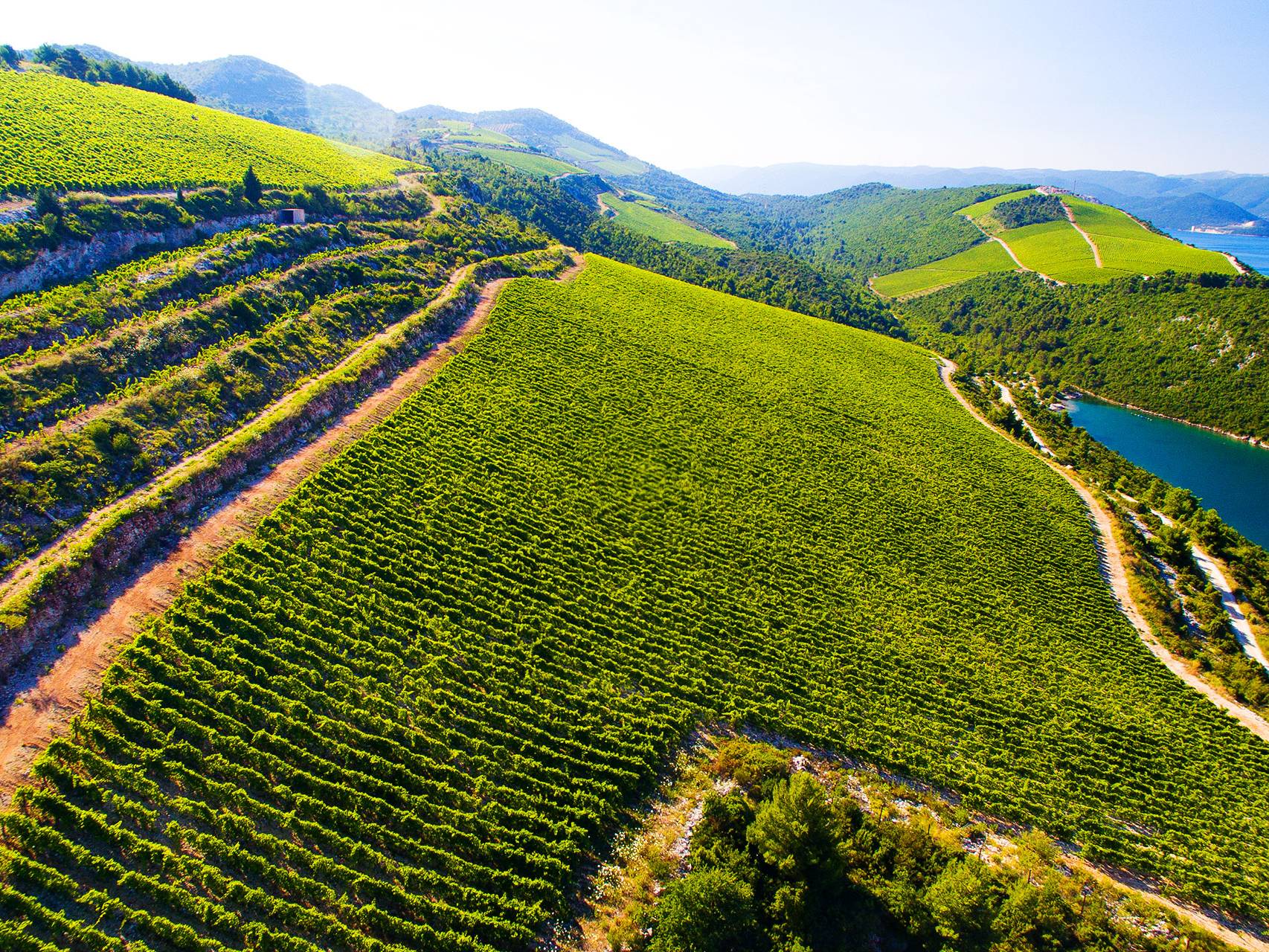
Komarna, the youngest among Croatia’s significant vineyards and wine-growing regions, born around fifteen years ago through land improvement and cultivation of karst terrain, stretches from the southern Adriatic locality of Komarna to the Duba bay on the slopes of the coastal belt between Neum and the mouth of the Neretva river.
Despite being a young wine region, it has already established itself among the leaders for the Plavac Mali and Tribidrag (aka Crljenak aka Zinfandel) grape varieties.
It produces distinct, more elegant, vibrant, and food-friendly Plavac wines, as well as perfectly balanced Tribidrag wines. The popularity and importance of wines from these vineyards are steadily growing year by year.
The most notable producers from Komarna are:
- Rizman Winery,
- Volarević Winery,
- Terra Madre Winery, and
- Saints Hills (this Pelješac winery also produces wine that scored a mind-blowing 99 of 100 points in Wine Enthusiast!) grow grapes here for one of its best labels – Sv. Roko in Komarna.
Bucavac vineyard, Primošten
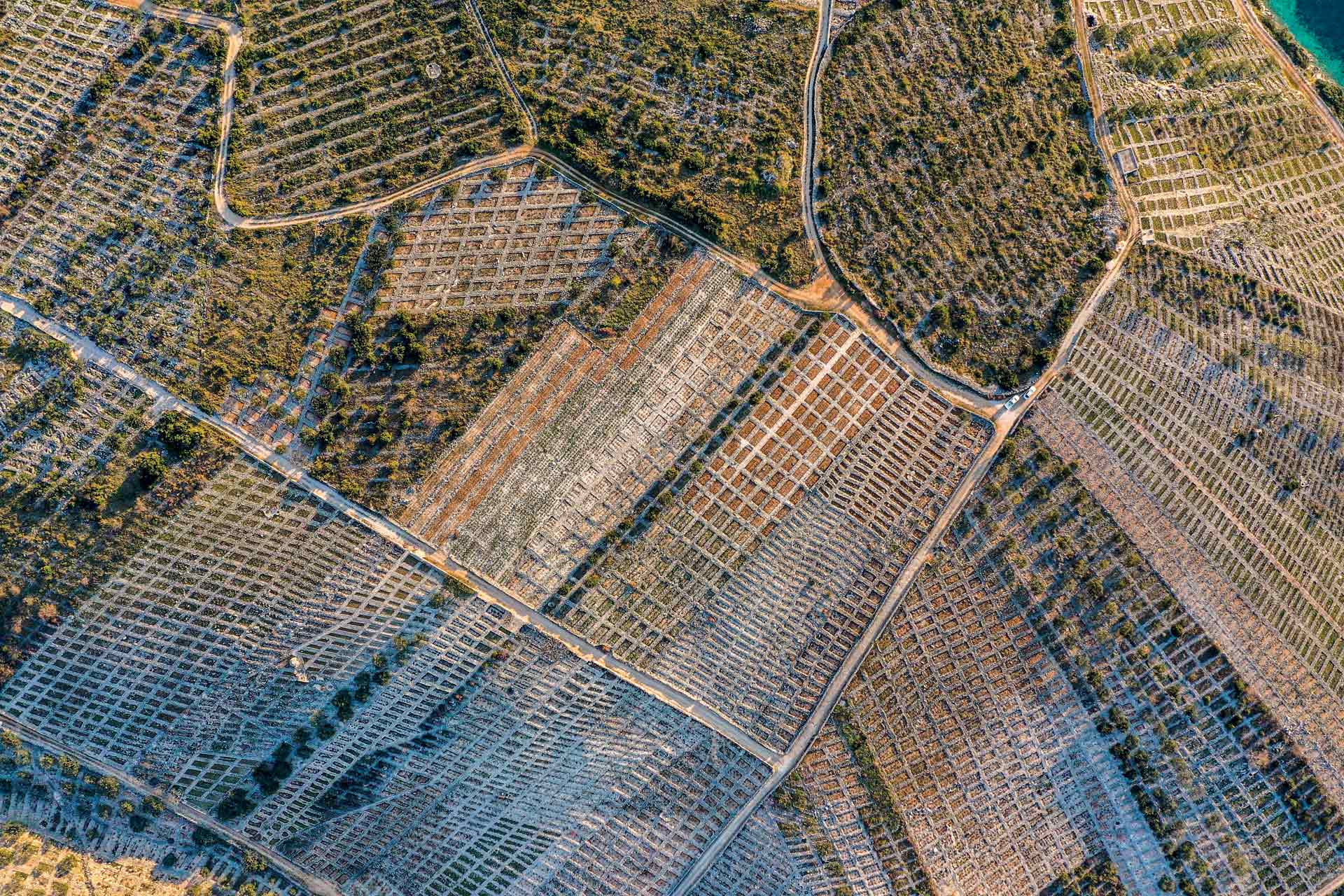
The most highly esteemed wines of the renowned Croatia indigenous red variety Babić originate from the vicinity of Primošten.
The vineyards are typically situated at higher positions, a distance away from the sea, with one exception being the Bucavac area, where the vineyards extend right up to the coastline.
Bucavac is renowned for its vineyards resembling stone lace, where drywalls encircle only a few vines, creating pockets that protect the soil from erosion.
This simultaneously makes them manageable solely through manual human labor, preventing the access of any machinery and even animals.
Hence, the Babić grapes from Bucavac are likely the most expensive grapes harvested in Croatia, particularly considering the exceptionally low yields.
However, in these specific positions, Babić achieves its perfect balance and exhibits the potential for the highest wine quality.
The most notable wineries that produce Babić from Bucavac vineyards are:
Korlat vineyard, Benkovac
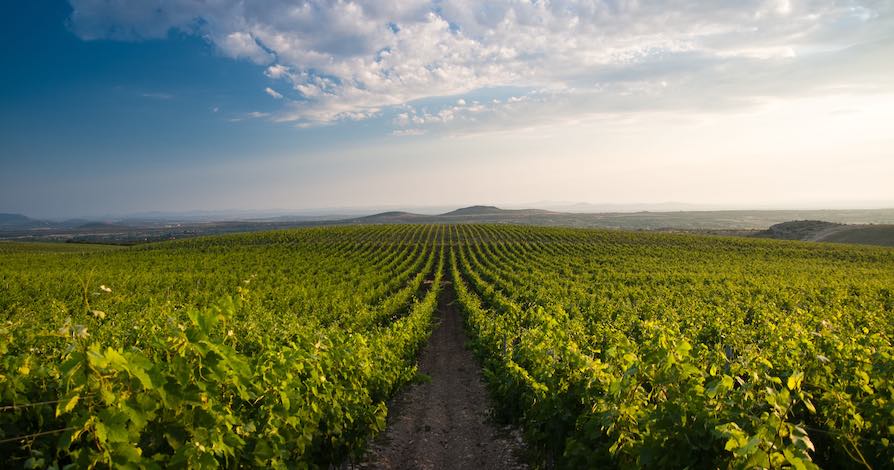
The vineyards at Korlat represent Croatia’s pioneering example of vine cultivation on improved terrain, a process that involves mechanized crushing and fragmentation of stone in the Dalmatian karst landscape.
The position of Korlat has emerged through the transformation of karst terrain, much like the vineyards of Komarna.
However, while Komarna has developed into an entire wine region, wines from the Korlat location enter the market under a single brand and from a single producer, the Zagreb-based company Badel 1862.
Instead of planting Plavac Mali, the indigenous grape variety, Korlat focuses on international varieties such as Merlot, Cabernet Sauvignon, and Syrah. Among these, Syrah stands out with exceptional results, yielding one of Croatia’s finest wines of that kind.
These are Badel’s largest vineyards, distinctly contrasting with their 80 hectares in Daruvar and 30 hectares in Križevci.
These Korlat vineyards are, in essence, Badel 1862’s brainchild – from soil preparation and vine planting to the production of the prestigious Korlat line of wines, every step was meticulously overseen by Badel experts.
Valle vineyard, Momjan
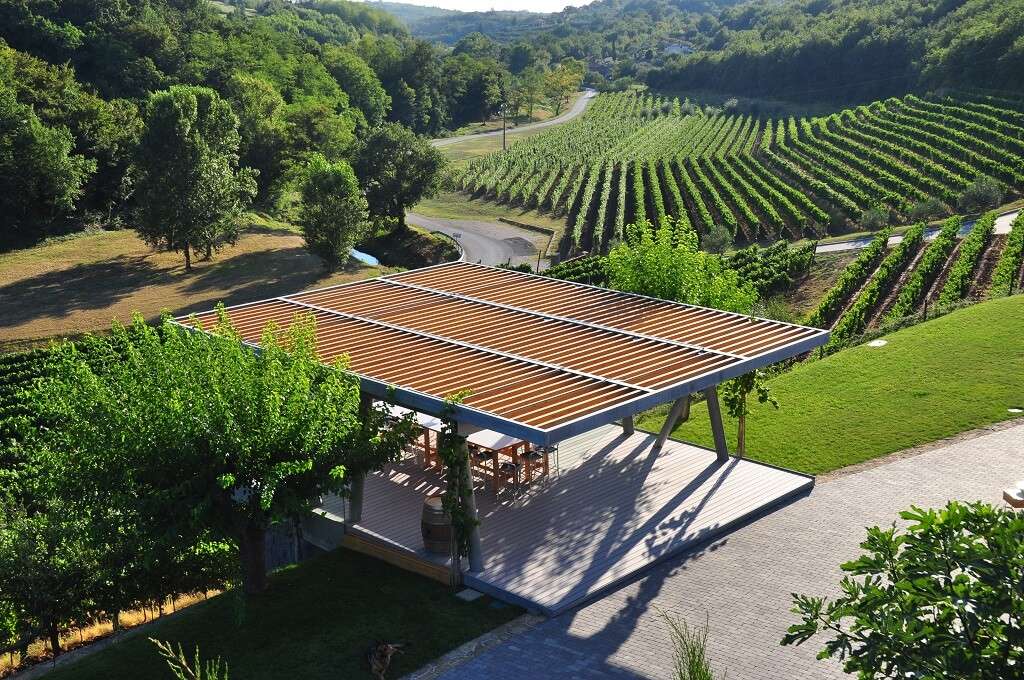
Valle Vineyard finds its place in the heart of the Istrian region’s interior, right at the base of the storied town of Momjan.
This charming town boasts a reputation as the birthplace of some of Croatia’s most exquisite indigenous aromatic wines. Chief among these is the revered Muscat Momjanski,
Some of the top producers of Malvasia Istriana are situated near Buje town. Along with Valle vineyards, other renowned vineyards like Santa Lucia, Sveti Jakov, and Contarini are also located there.
The most notable producers of the Buje wine-growing region are:
Motovun vineyard, Motovun
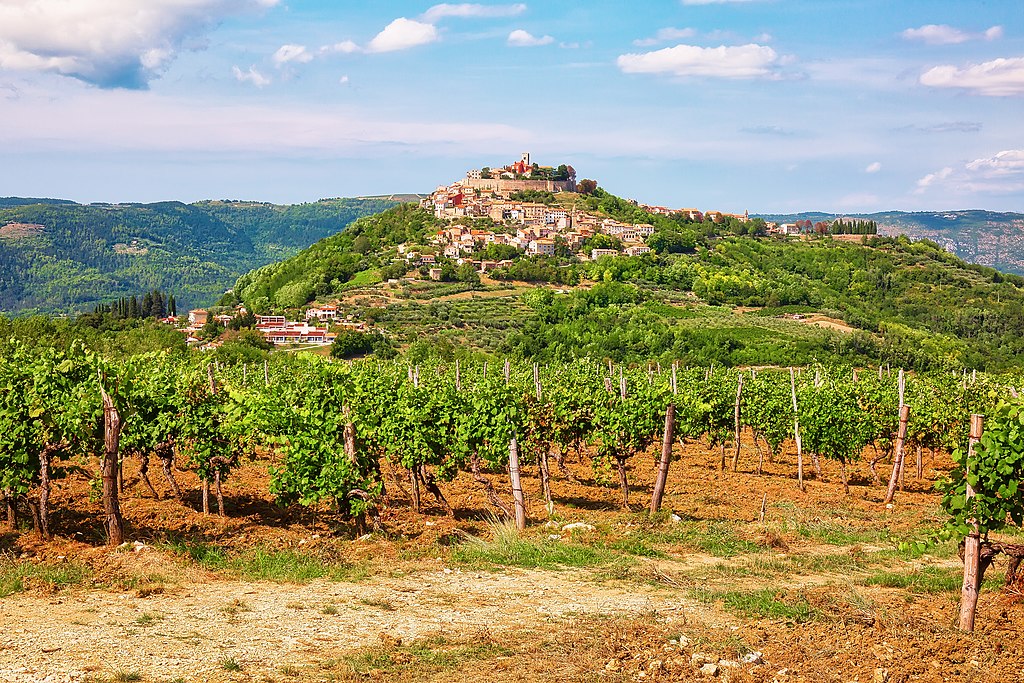
Istria offers countless favorable locations for wine production, and singling out the best ones isn’t an easy task.
However, in recent years, the surroundings of historic Motovun have undoubtedly emerged as a place where the indigenous Croatian red variety – Teran – thrives unlike anywhere else.
The vineyards of Teran in the Motovun region are planted in the so-called “white soil,” while most other Teran vines from coastal areas come from red soil.
Motovun’s Teran wines are brimming with flavor, possessing depth, liveliness, and maturity simultaneously, showcasing a wine character that can mature gracefully over time.
Motovun’s Teran holds the status of a renowned historical wine symbol. Still, modern-day winemakers have elevated the quality of this variety to entirely new and previously unimagined heights and given wine enthusiasts plenty of reasons to uncover this variety.
The most renowned wineries near Motovun are:
- Benvenuti Winery,
- Roxanich Winery,
- Fakin Winery,
- Tomaz Winery.
Plešivica vineyard, Jastrebarsko
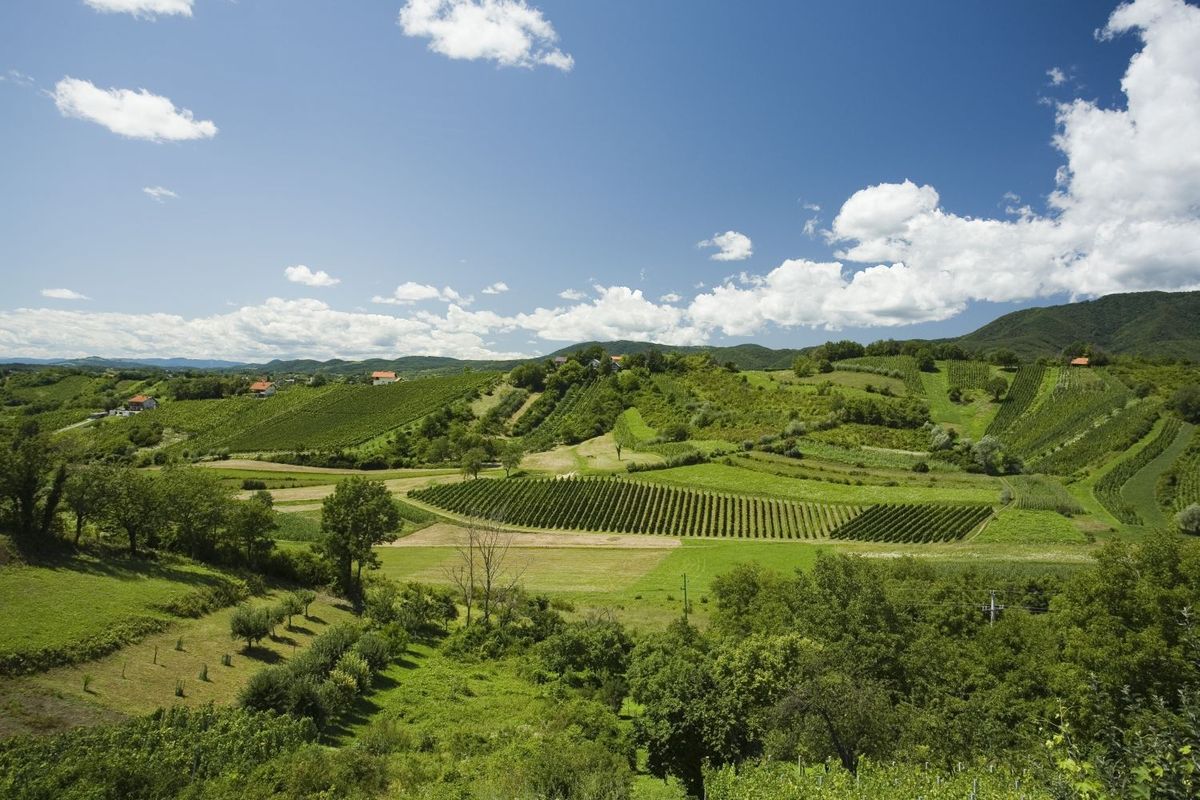
The term Plešivica refers to a wine-growing region that stretches across the hills ascending towards the Samobor Mountain, deriving its name from the village of Plešivica, where some of the finest vineyards of this wine region are situated.
The cooler climate of Plešivica favors the cultivation of aromatic grape varieties like Sauvignon Blanc, Riesling, and the Pinot family.
The steep slopes and high altitudes of the prime vineyard locations grant them superior sun exposure compared to other vineyards, facilitating optimal ripening with ease.
The image of Plešivica’s vineyards emerging from the mist like islands from the sea that covers the valleys around Jastrebarsko vividly captures the potential of Plešivica’s vineyards.
Additionally, from the less sunlit vineyards, some of Croatia’s finest sparkling wines originate, showcasing Plešivica’s successful utilization of its full potential.
The most notable producers in the Plešivica region are:
Saint Urban and Štrigova vineyard, Međimurje
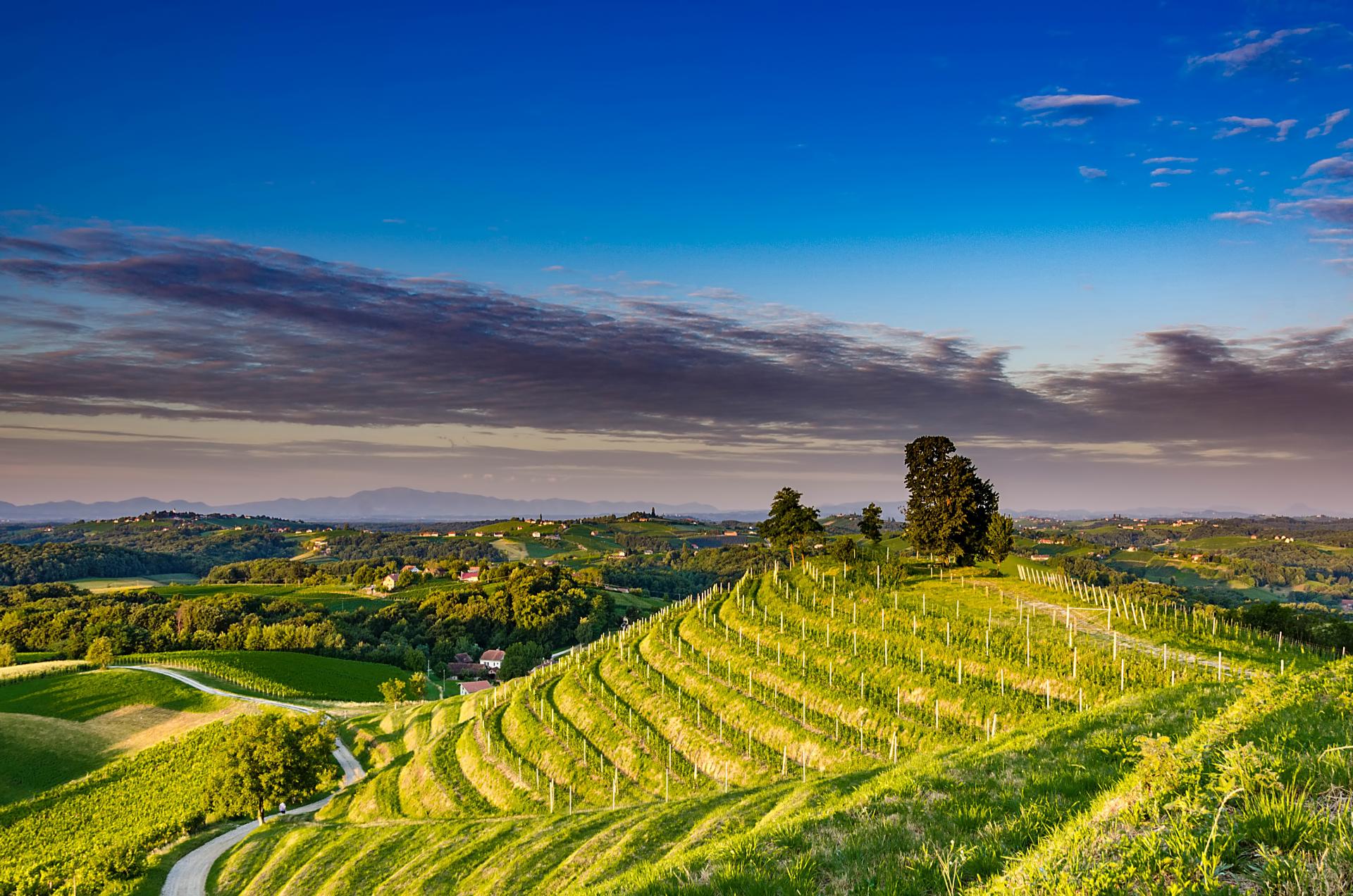
The Međimurje vineyards spreads across the hilly region of Međimurje, known as Gornje Međimurje.
It starts in the village of Lopatinec, when heading from the main county town of Čakovec, extending towards the village of Selnica, where it turns left towards Štrigova and the Slovenian border, reaching its furthest point, Banfima.
From there, it runs along the border itself down to Sveti Urban, and then returns to Lopatinec via Stanetinec.
Within these boundaries, around 1100 hectares of vineyards are packed into a small area, which is ideal for viticulture.
Scattered across the hills of Gornje Međimurje, these vineyards lie at elevations ranging from 200 to 340 meters, often quite steep, granting them excellent sun exposure and elevation above the lingering morning mists during spring and autumn.
Just like the constant airflow, this is another characteristic of good vineyard locations.
The soil is diverse but predominantly clay with occasional layers of limestone or sandy sections. The climate is typically continental, featuring cold winters and warm summers, along with a high average humidity.
Under these conditions, certain micro-locations have proven superior to others, with the top vineyards including Sveti Urban, Železna gora, Banfi, Prekopa, and Dragoslavec.
The region is famed for producing some of the best Croatian crisp and refreshing whites, Pušipel and Sauvignon Blanc.
Some of the most renowned wineries in the Međimurje region are:
- Štampar Winery,
- Dvanjaščak Kozol Winery,
- Kocjan Winery,
- Cmrečnjak Winery.
Kutjevo vineyard, Kutjevo
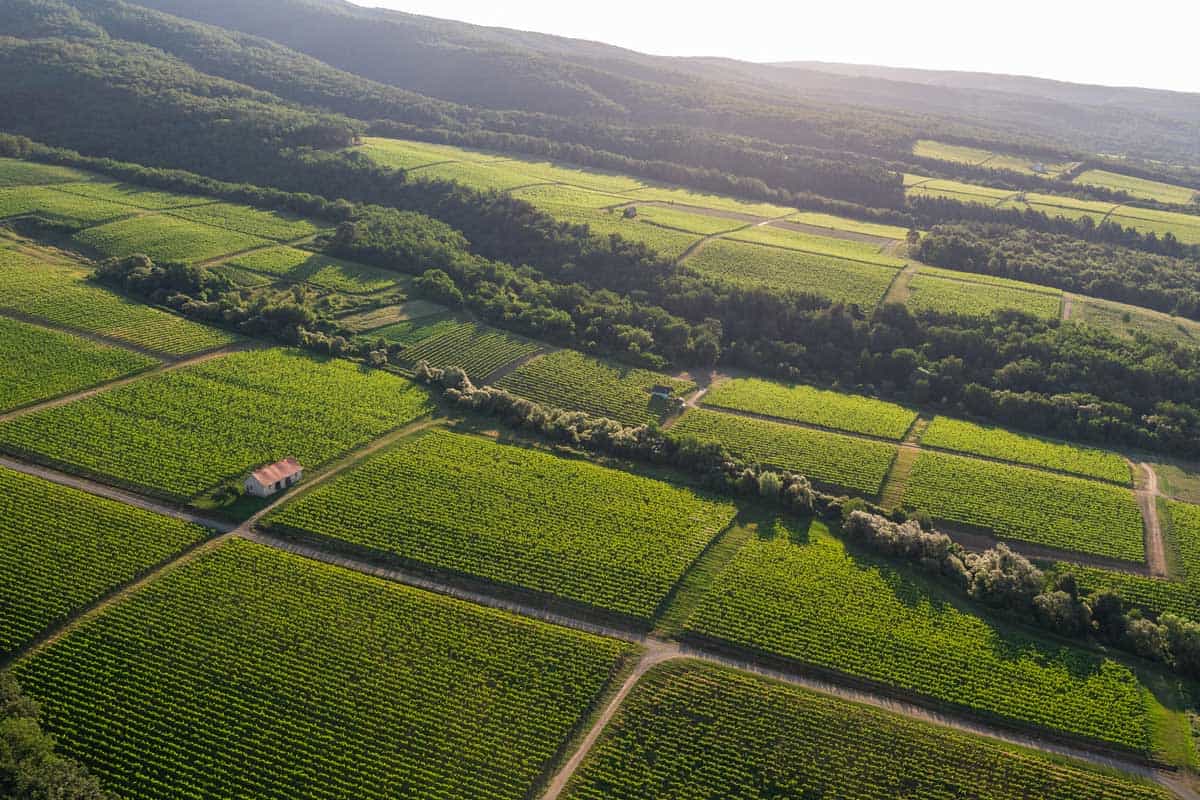
Nestled in continental Slavonia and the Danube wine region, the vineyards of Kutjevo have an extraordinary terroir that lends itself to the flourishing of the nation’s most beloved grape variety, Graševina.
Nowhere else does this iconic Croatian varietal exhibit such exceptional qualities as in the Kutjevo vineyards, within whom there are a few potential grand cru sites, such as:
- Vinkomir,
- Mitrovac,
- Hrnjevac,
- Venje, and
- Vetovo.
Graševina, from the leading winemakers of the Kutjevo region, encapsulates the perfect equilibrium between ripeness and vibrancy, opulence and grace, mineral nuances, and fruity expressions.
The grapes cultivated in the Kutjevo vineyards not only embody the potential for extended aging but also serve as the foundation for crafting archival vintages of distinction.
Renowned for their reliability, even in more challenging harvests, these Graševinas are specially earmarked for dedicated labeling and individualized vinification, a testament to their unwavering quality.
Here, amidst volcanic rock and rising to an elevation of 450 meters above sea level, the grapes take on a character defined by minerality and a distinct taste, forming the very essence of Kutjevo’s exquisite wines.
Thus, some of the wines stemming from Kutjevo vineyards are celebrated foremost for their matured style, often derived from late or other prestigious harvests.
A tapestry of noble rot notes occasionally graces the palate, coupled with an impressive mineral backbone that traverses the tongue and lingers as an eloquent tribute to the land’s essence.
The most notable producers of the Kutjevo wine-growing region are:
Principovac vineyard, Ilok
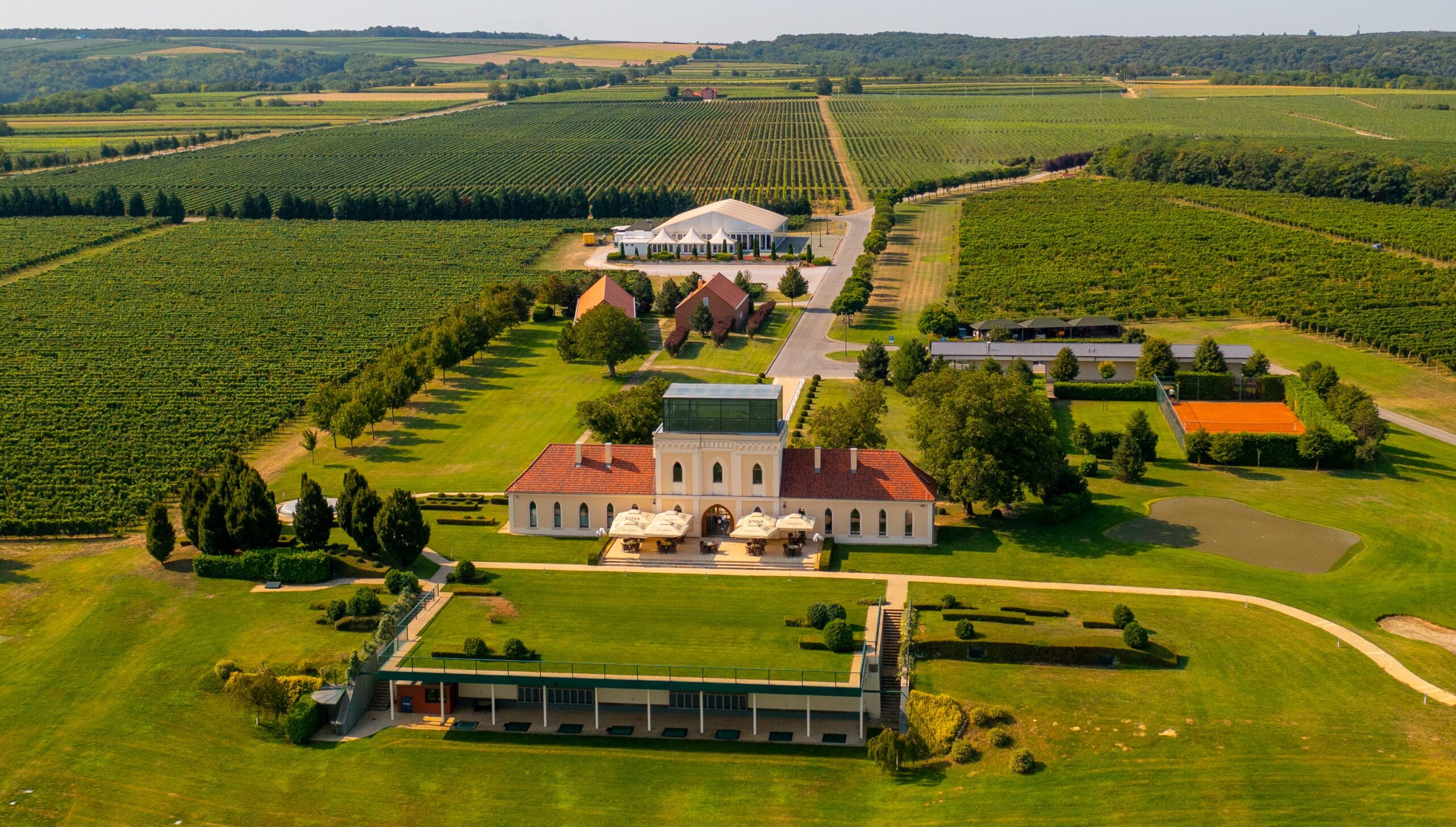
The Ilok wine-growing region, located on the slopes of the Fruška Gora and right next to the Danube River, is renowned for its fine wines.
However, the position of Principovac stands out with its uniqueness. Perched atop, Principovac benefits from a continuous flow of air, preserving the health of the delicately sensitive Traminer grapes.
It also withstands the extremely low winter temperatures typical of the region, which can be harmful to the vines.
The well-drained soil of Principovac contributes to the perfect sugar content in ripe grapes, while the Danube safeguards the necessary microclimatic balance for the aromatic Traminer variety.
The result is evident in the mature, luscious, and aromatic wines of Ilok Cellars, the most renowned winery in the region, under the same label.
Conclusion
When it comes to top-tier tourist destinations, Croatia undoubtedly stands out. With its captivating landscapes and an array of tourist attractions, this country has captured the hearts of travelers worldwide.
However, what might surprise many is that Croatia’s fame isn’t just confined to its stunning scenery and cultural treasures.
In recent decades, it has emerged as a hotspot for wine enthusiasts, drawing attention for its rich winemaking heritage and breathtaking vineyards.
Our Expertise
Valentina Silovic is an experienced sommelier and content creator with over a decade of expertise in the wine industry. She has worked in various settings, from luxurious hotels to cozy wine bars, and has explored the grandest wineries in Croatia, tasting and discussing an uncountable number of bottles along the way.
Want to meet the team behind Wine & more, seek recommendations, and discover in-depth insights into our product testing and reviews? Click here now!





